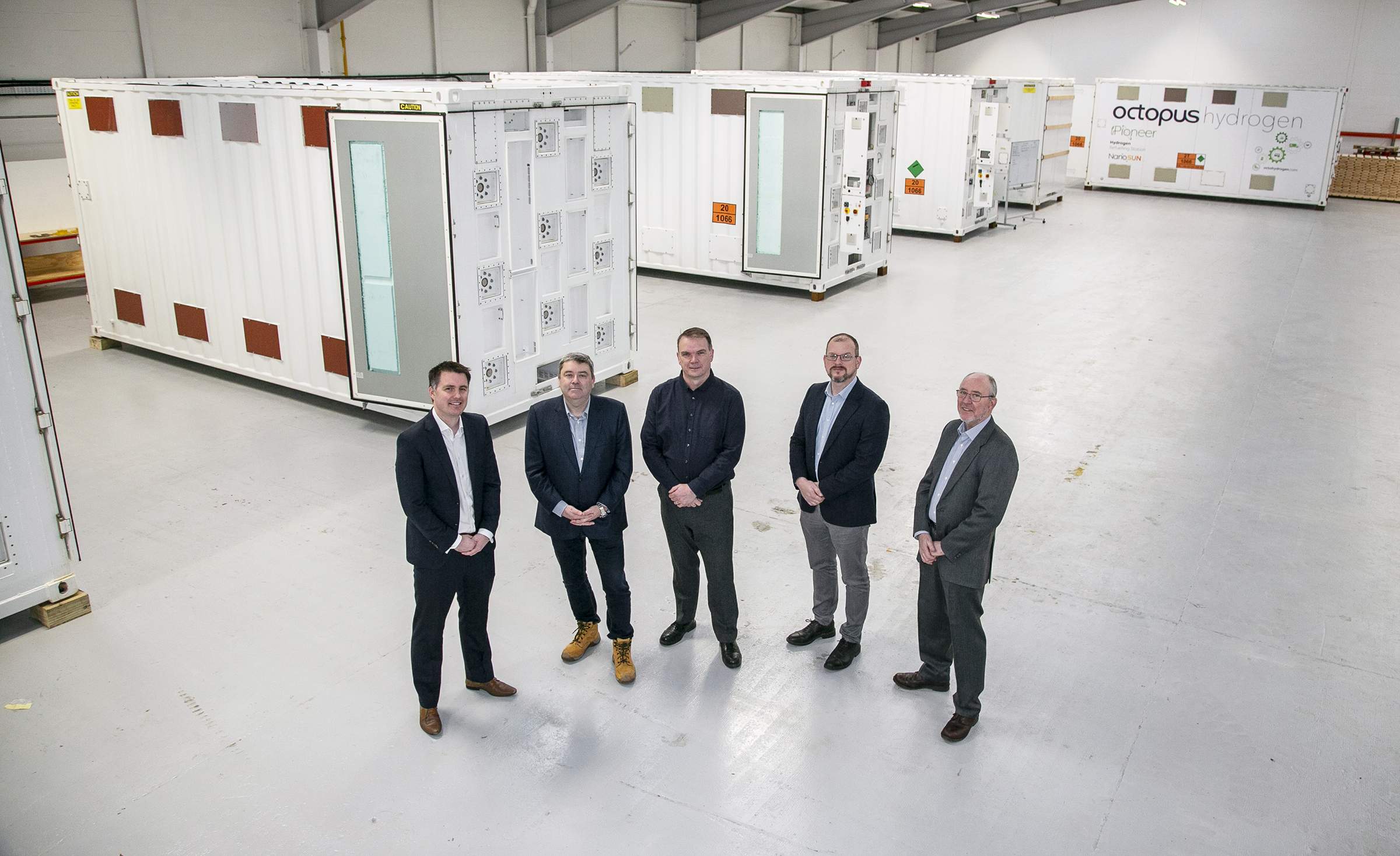TIS Manufacturing: Unlocking the Potential for Hydrogen in Mobility

TIS Manufacturing has revealed that it is to make mobile hydrogen refuelling stations as part of a new renewables push. Hydrogen Industry Leaders spoke to the company about the project and how the industry can scale up hydrogen in mobility.
The manufacturing company that specialises in providing well intervention and control equipment for the energy industry received a £1 million investment in its renewables division and will be building mobile hydrogen refuelling stations on behalf of engineering firm NanoSUN.
It will see the recruitment drive increase the company’s workforce by 50 per cent and it will allow TIS Manufacturing to illustrate the transferable nature of its services from oil and gas to the renewables sector.
TIS Manufacturing Is Making The Transition To Becoming More Sustainable
Hydrogen Industry Leaders spoke to Drew Robertson, Business Development Manager at TIS Manufacturing about making the transition to become more sustainable.
Drew began by explaining that when it comes to using hydrogen, it is important for TIS Manufacturing to understand the unit itself: “We’ve built these kinds of units for traditional oil and gas firms, they are similar units that have done similar things for other industries or for the more traditional energy industry for a long time.”
We haven’t been dealing with hydrogen, but the principles largely remain the same.
When it comes to bringing hydrogen into the equation, Drew revealed that there have been many challenges, he said: “The primary challenge is that hydrogen as a module is very small and wants to escape through many sealing gaps between various components. It needs to be safely contained.
“Manufacturing is always underestimated in terms of difficulty, and we must make sure that all of our lines are free from any contaminants, this is critical to make sure we don’t damage anyone or their vehicles.”
Safety is a key focus for TIS Manufacturing and Drew expressed that it is essential the company ensures that no debris sneaks into the pipework: “An advantage of Pioneer is that it is very traceable in terms of purity because there no oil lines for compressors or anything in the equipment.
“If you get any kind of small amounts of debris in any of the pipework, it’s very easy for it to scratch valves and seals and these cause leaks. That is one of the big challenges, we must make sure that we don’t get any particulates inside the pipework.”
Feedback Is Crucial To Boosting Hydrogen In Mobility
Establishing how hydrogen will fit within the ecosystem of sustainable transport is one of the biggest questions facing the sector.
To scale up hydrogen in mobility Drew said that it comes down to resources: “It is resource-based, we need the dedicated resource. To scale up, we have invested in the facility and the people in the workshop and in the office with the future and growth in mind, and with more capacity to be able to grow.”
In addition to this, he continued to explain that there are still things to be learned as the industry continues to use hydrogen in its innovations: “There are still things that can be learned as we build these things, it is a different thing drawing it and designing it from an engineering perspective to actually building it.”
A lot of feedback you get from the technicians that put these things together as to what would be a quicker way or more efficient way or an easier way to tackle the future service works.
Young People Are Increasingly Interested In Learning About Hydrogen
Another way that hydrogen in mobility can be scaled up is by encouraging younger people to get into the industry and for them to be provided with the right skills and training that is required.
Encouraging young people to get into the industry is a focus for TIS Manufacturing. Drew told Hydrogen Industry Leaders that personally, he has noticed that young people are interested in helping the world make the transition to net zero.
He said: “It is quite self-fulfilling, in the world, today people are interested in this. I’m only 38 and we’re interested in tackling these larger issues but on a smaller scale.
“What we can do realistically is to contribute something on a tangible scale. We’re building units that are going to market and these are going to be used in hydrogen fuel cell vehicles, you feel like you’re contributing.”
Building Confidence Is Essential To Scaling Up Hydrogen In Mobility
Hydrogen Industry Leaders also spoke to Paul Hodgson, Chief Technology Officer at NanoSUN about how the industry can scale up mobility in hydrogen. He said: “Especially in the mobility space, there was a real gap in the level of investment required in terms of infrastructure and the speed that it could be rolled out.”
“We were speaking to lots of small startups and even slightly larger organisations who are trying to develop applications for hydrogen and they just couldn’t get hold of hydrogen in the form that they needed, for example, delivered at high pressure into the tanks they needed.”
Paul Hodgson explained that this is where NanoSUN’s Pioneer becomes important: “That is the premise that we developed NanoSUN on and the ideal application of Pioneer is the mobility market. This is because it is one in which you need relatively high pressures.
“Pioneer is the kind of factory buildable refuelling system that comes out of a box in Aberdeen, that allows us to be able to get solutions to our customers quickly.”
At the moment there are lots of applications where people are trying out new fleets and they want to be able to access refuelling infrastructure without committing large amounts of capital and want to plan relatively quickly.
With 21 years of experience in producing equipment for the oil and gas industry, making the transition to hydrogen is helping TIS Manufacturing become more sustainable and helping to decarbonise the transport sector, including maritime, aviation and road.
Hydrogen Industry Leaders will delve into the core topic of how the hydrogen demand can be built across aviation, road haulage and wider mobility at HIL London on 5 July 2023, at the Radisson Hotel & Conference Centre. You can find out more about the event here.

